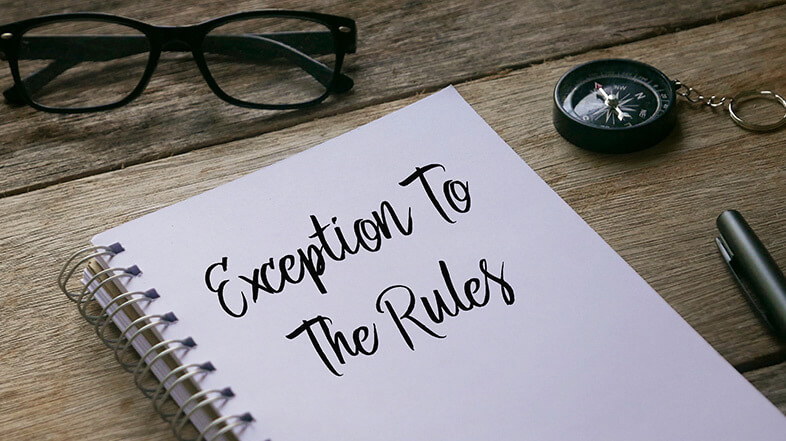
Changing Jobs? Know Your Vesting Schedule before Quitting
Vesting schedules prevent 401(k) investors who don’t stay long at a company from taking their employer retirement contributions with them when they change jobs.
Which means the money your employer contributes to your 401(k) may be taken back should you decide it’s time for a change.
With Americans still leaving jobs in droves and many more planning to resign in 2023, a lot of investors may be in for a rude awakening to find their 401(k) balance lower than expected.
2022 was another record year for quitting with 50 million people resigning.¹
And, according to a new LinkedIn survey, 61% of U.S. employees are considering handing in their resignations in 2023.²
If you’re thinking about changing jobs, make sure you check your company’s vesting schedule because all that free money you received through your company match may not be yours to keep.
Keep reading to find out the types of vesting schedules so you can make a more strategic decision should you be looking to quit in the near future.
401(k) Vesting Rules

Vesting simply means ownership. While the money you personally contribute to your 401(k) is yours to keep, it’s not always the case with the company match.
401(k) vesting rules vary from employer to employer.
Sometimes the company match is yours to keep right away, and sometimes you have to wait until vesting requirements are met.
When you become 100% vested, you own 100% of your 401(k) balance and your employer cannot take it back.
However, if you change jobs before you are fully vested – depending on the vesting schedule – you will have to return part or all of the money your company matched.
Should this happen, you may find a chunk of money removed from your retirement savings. And, if you’re planning on that money to reach your savings goals, you may be in for a rude awakening when you quit your job.
This is why 401(k) investors need to understand their company’s vesting schedule and take it into account before changing jobs.
3 Types of Vesting Schedules

Understanding your 401(k) vesting schedule ahead of time helps you make a better decision about when to leave.
Being strategic about this may help you keep a lot more money and have more saved at retirement.
While vesting schedules vary from employer to employer, they must set their schedules based on strict guidelines set by the government.
And there is a limit on how long a company can prevent 401(k) investors from being fully vested – with the maximum being six years.
There are three types of vesting schedules: immediate, graded, and cliff.
#1 Immediate
An immediate vesting schedule means you own your employer contribution as soon as you receive it in your 401(k) account.
#2 Graded
A graded vesting schedule means you vest a certain percentage of your employer matching dollars in a set period of time, until you are 100% vested. For example, 20% might be vested after your first year working, 40% vested the second year, etc.
By law, employers must vest employees at least 20% at the end of 2 years, and another 20% annually each year thereafter.
This means by the end of year 6 working for your company, you will be 100% vested for the company match.
If you leave the company after 4 years and your company has a 6-year vesting schedule, you will own 60% of the amount your employer has contributed if they vested 20% at the end of year 2, 20% year 3, and 20% year 4.
#3 Cliff
Cliff vesting is when a company requires you to stay employed for a specific amount of time before the money your employer contributed is yours.
Employers have up to 3 years to vest employees in this type of vesting schedule.
If you were to change jobs after 2 years and your company required you to work for 3 years to vest the entire company match, you would have to forfeit the money your company contributed.
Exceptions to the Rule

401(k) investors may be able to take ownership of their employer’s matching contributions and be 100% vested ahead of schedule in the following scenarios:
- When you reach full retirement age (FRA)
- When meeting a company’s early retirement age provision (if applicable)
- In the event that the company retirement plan is fully or partially terminated³
Maximize Your 401(k) Portfolio

Every day, we talk to investors just like you – many of whom feel they have no control over their retirement success or are frustrated by industry jargon and financial advisors.
We believe you deserve better, which is why we’re bringing common sense back to 401(k) investing.
401(k) Maneuver provides independent, professional account management to help employees, just like you, grow and protect their 401(k) accounts.
Our goal is to increase your account performance over time, manage downside risk to minimize losses, and reduce fees that are hurting your retirement account performance.
While we manage your 401(k) for you, we are not a robo advisor. Far from it.
We review and rebalance your account for you with the goal in mind of keeping you in what is working and out of what is not.
The best part? There are no in-person meetings required, and you don’t have to move your 401(k). Leave it right where it is, and we handle the rest.
Book a complimentary 15-minute 401(k) strategy session with one of our advisors to see how we can help you have a brighter retirement future.
Book a 401(k) Strategy Session
Sources:
- https://www.cnbc.com/2023/02/02/80percent-of-workers-who-quit-in-great-resignation-regret-it-new-survey.html
- https://www.businessinsider.com/great-resignation-linkedin-us-workers-considering-quitting-2023-1
- https://www.investopedia.com/401-k-vesting-rules-5323652








